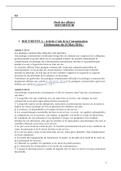Samenvatting
Summary Property Development
- Instelling
- Technische Universiteit Eindhoven (TUE)
- Boek
- Property Development
This is a summary for the course 7U4X0 Realization, exploitation and transformation about the part of Property Development. The summary was made by watching lectures, reading the book Property Development by Reed and Sims and reading the lecture slides.
[Meer zien]













